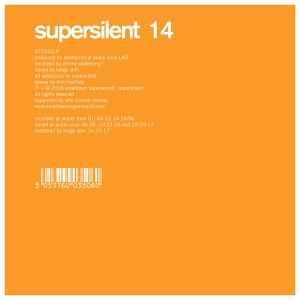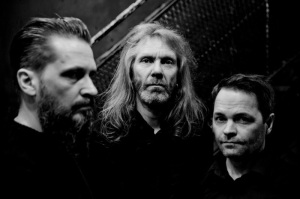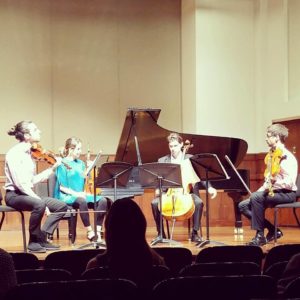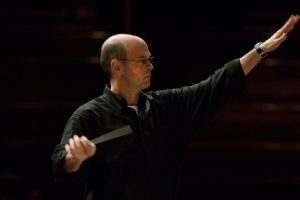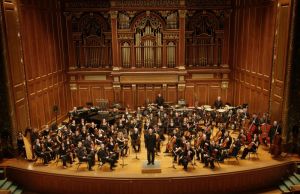The Proms concert on August 14, which was presented by the West-Eastern Divan Orchestra, conducted by Daniel Barenboim, for inexplicable reasons added at the beginning of the concert the Polonaise from Eugene Onegin by Tschaikovsky (possibly because starting with a five minute orchestra piece was better than starting with a concerto?). In any case, the first half of the concert was the Tschaikovsky Violin Concerto, with Lisa Batiashivili, as soloist. The concert ended with The Poem of Ecstasy by Scriabin. The second half of the concert began with the first London performance of Looking for Palestine by David Robert Coleman. Looking for Palestine sets portions of a play by Najla Said which deals with her experiences growing up with a number of different, and in some ways apparently conflicting, identities–Lebanese, Palestinian, Jewish, and American. The part Coleman sets concerns her returning to Palestine in 2006 and inadvertently and inescapably becoming a first hand witness to that year’s war in Lebanon. Later, in New York, just walking down the street, she encounters a protest for Palestinian rights and once more has to confront her own identity and its meaning. Looking for Palestine’s score includes a prominent solo part for Oud (the player of which in this performance was not identified in the program) whose distinctive melodic patterns and microtonal tuning inform the nature of the orchestral writing. There is also a prominent piano part, which was played in this performance by the composer. The soprano soloist, Elsa Dreisig, sang and, sometimes spoke, her wide-ranging and dramatic part with chrystal-clear diction, an always beautiful sound, and great conviction and communication. The piece realizes the dramatic quality of the text with music which is varied, colorful, and equally dramatic and compelling. Its orchestration and the control of its progress are masterly, impressive, and completely convincing. Coleman wrote in his program note that “the piece does not aim to promote an ideological standpoint,” but the presentation of the issue, especially in the very personal context of the text, makes at the very least the implication of an outlook, one that reinforces that evinced by the founding of this orchestra by Barenboim, and its very existence, inescapable.
Arvo Pärt’s music is one of the paradigms of what Tim Rutherford-Johnson calls “spiritual minimalism.” The quality of his music developed from his reaction against both the late Soviet post-Shostakovitch atmosphere of his student years and what might be considered the modernist dogma of the west, as well as for his search for an authentic musical language representing his personal musical inclinations as well as his Estonian heritage. One of the key elements of the language he forged for himself is the technique he calls tintinnabuli, about which he said (in an interview on the BBC in 2000), “Tintinnabuli is the mathematically exact connection from one line to another…..tintinnabuli is the rule where the melody and the accompaniment [accompanying voice]…is one. One and one, it is one – it is not two. This is the secret of this technique.”
Pärt’s Third Symphony, which opened the Prom on August 13, was an important milestone in his development of his personal style. It ended an eight year hiatus in his composition, a result of what he felt was a stylistic impasse, during which he discovered and studied medieval music, particularly that of the Notre-Dame school. It is a three movement piece lasting 25 minutes. It is full of striking sonorities and textures, and it is very expertly and handsomely orchestrated. For this listener there is a frustration with the shaping and continuity of the music, which has a flatness and sameness, resulting from the compositional techniques which he was developing during the composition of this work which finally became tintinnabuli, essentially making no structural difference between the beginning, the middle, and the end of any stretch of music. The results seem to me to be almost unbearably static, as opposed, for instance, to the music of Steve Reich and other minimalist, where the processes are about progress from one point to another. The audience at this concert shared none of my teleological reservations at all; they went wild for it. Popular opinion, I guess, is with this audience. The playing of the Estonian Festival Orchestra, conducted by Paavo Järvi, in the Pärt and in the Sibelius Fifth Symphony, which ended the concert, was vivid and remarkably flexible and subtle and responsive to the music. In the Grieg Piano Concerto, where they were joined by Khatia Buniatishvili, they skirted the edge of death by nuance.
The August 13 installment of the Proms Cadogan Hall series featured percussionist Colin Currie and the JACK Quartet playing two works of Iannis Xenakis framing the first performances of works by Simon Holt and Suzanne Farrin, the latter a BBC Commission. Simon Holt’s Quadriga evokes the image of horses, particularly that of the Roman chariot, drawn by four horses abreast, often depicted in neo-classical statuary. The titles of the four movements are named after elements in classical dressage: levade, croupade, ballotade, and capriole, all among the dressage moves known as ‘airs above the ground.’ Holt’s music, which is lively and engaging, mostly tends to use the string quartet as an expansion or amplification (and sometimes just the accompaniment) of the music of the marimba, which is the predominant instrument in the ensemble until the final movement.
Suzanne Farrin’s Hypersea is, the program note explained, “based on the theory, proposed by palaeontologists Mark McMenamin and Dianna McMenamin, that all life on land is interconnected through on single ‘liquid matrix’ linking plants, fungi, and animals through physical contact and the sharing of fluids: the hypersea.” Farrin commented that she found the composition of works for ensembles which consisted of a single instrument and string quartet to be the most challenging of all. Her solution to that problem in this case, she said, was to make it a string quintet. That seemed to mean that all the instruments, including all the percussion instruments, primarily the vibraphone, were bowed. This certainly put all the instruments in the same, rather alluring, sound world. It was, as a piece, very compelling and extremely successful. The playing in both the Holt and Farrin was masterly and dazzling.
For a long time now, the music of Xenakis has seemed to me to sound, basically, like Greek folk-music, with its poise and furious rhythmic energy and intensity and its strident and fierce melodic and timbral qualities. Whether the elegance, ease, polish, and refinement of the performances of both Rebounds B of 1998 (Currie) and Tetras of 1983 (the JACKs) enhances or militates against those qualities is a question to be considered, but it’s certainly the case that the likes of the them is not likely to be encountered anywhere else at any time by anybody else.
Every year the BBC runs a program which they call INSPIRE, which is a series of workshops and events for young (ages 12-18) composers, culminating in a competition, the works of the winners of which are presented in a concert which is part of the Proms. Over the years this has taken various forms, but in the past few it has been presented by members of the Aurora Orchestra in the Radio Theater in Broadcasting House. This year the concert was presented by Hannah Conway, and conducted by Christopher Stark. The compositions performed were The Weevil’ng by Tom Hughes (14), Amber by Ruby Grace Amar (14), Lower Junior Winners, Daddy Longlegs by Paul Greally (17), Upper Junior Winner, Elegy for Aylan by Alexia Sloane (18), and Inhale. Exhale. by Isabel Hazel Wood (18) Senior Winners. It also included performances of Trallali, Trallaley, Trallalera by Sarah Jenkins and We Soldiers Must March by Rebecca Farthing, works commissioned by the BBC from winners from the 2017 competition, both written in a series of workshops with mentor-composer Martin Suckling “taking inspiration” from Mahler’s Des Knaben Wunderhorn.
